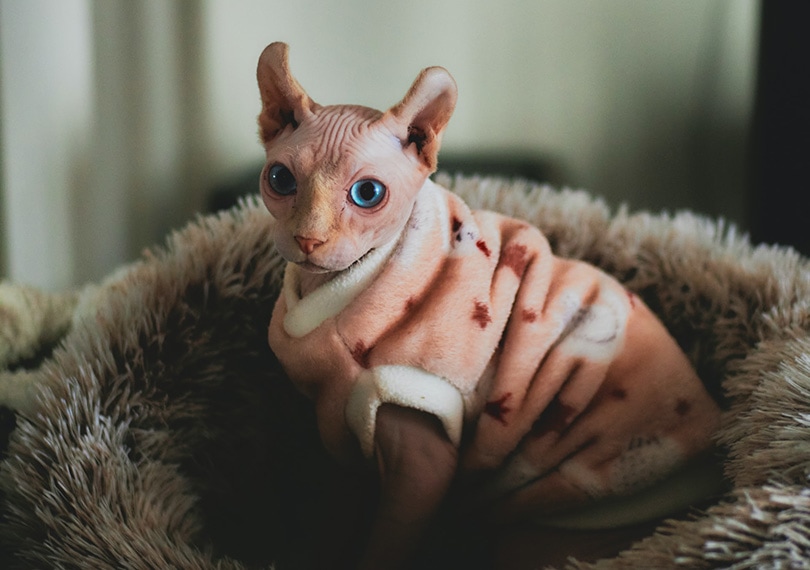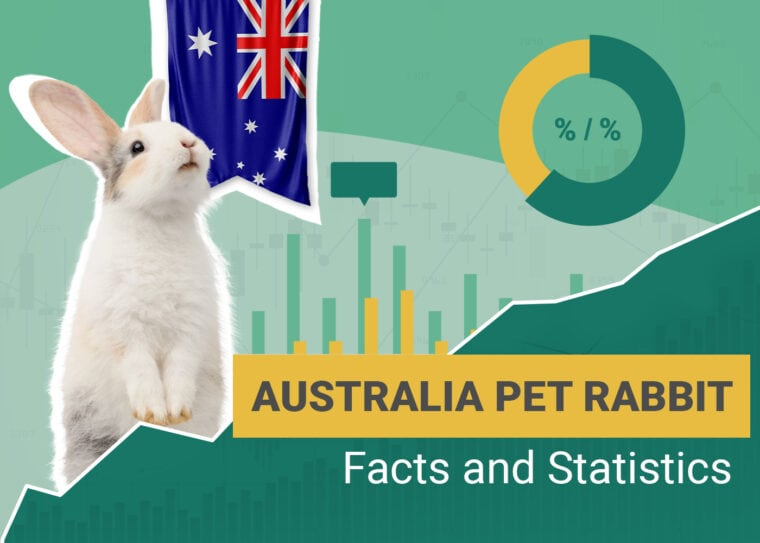
Click to Skip Ahead
Note: This article’s statistics come from third-party sources and do not represent the opinions of this website.
Rabbits were first introduced to Australia in 1859. They were set out into the wild to be hunted, but their population quickly grew out of control, and they became an invasive species. Today, rabbits can’t be imported into Australia, but they can be kept as pets in most states.
Australia shares an interesting relationship with rabbits, as they’re one of the most popular small mammal pets in Australian homes, but they’re also a highly invasive species that cause significant environmental destruction. Here are the latest statistics and information on pet rabbits in Australia.
 Top 11 Australian Pet Rabbit Statistics
Top 11 Australian Pet Rabbit Statistics
- Small mammals make up about 4% of pets in Australia in 2022.
- In 2022, 54% of Australian households with small mammals as pets owned rabbits.
- Between 2020-2021, 1.8% of animals coming into pet rescues were rabbits.
- The average amount of time it takes rabbits to be rehomed is 19 days.
- It costs between $20-$80 to buy a rabbit in Australia.
- Australian rabbit owners can expect to pay between $30-$50 a month for their pet rabbits.
- It’s highly recommended for pet rabbits to be desexed, and owners can expect to pay between $100-$300 for the procedure.
- Rabbits can cause about $1 billion in environmental damage annually.
- There are approximately 200 million feral rabbits in Australia.
- A study published in 2022 revealed that a single introduction of rabbits to Australia started a mass biological invasion.
- The current fine for keeping pet rabbits in Queensland is $65,275.

Rabbits as Pets in Australia
1. Small mammals make up about 4% of pets in Australia in 2022.
(Animal Medicines Australia)
Small mammals aren’t the most popular pets in Australia. Most Australian homes with pets own cats or dogs. However, the number of Australian homes with small mammals is about 901,000, which is still a significant number.
2. In 2022, 54% of Australian households with small mammals as pets owned rabbits.
(Animal Medicines Australia)
Of the 4% of households with small mammal pets, the majority of them own rabbits. Guinea pigs are the second most popular small mammal pets in Australia. The most common reasons why Australians keep small mammals is relaxation and companionship. Other reasons include lower maintenance and taking in these animals from animal rescues.
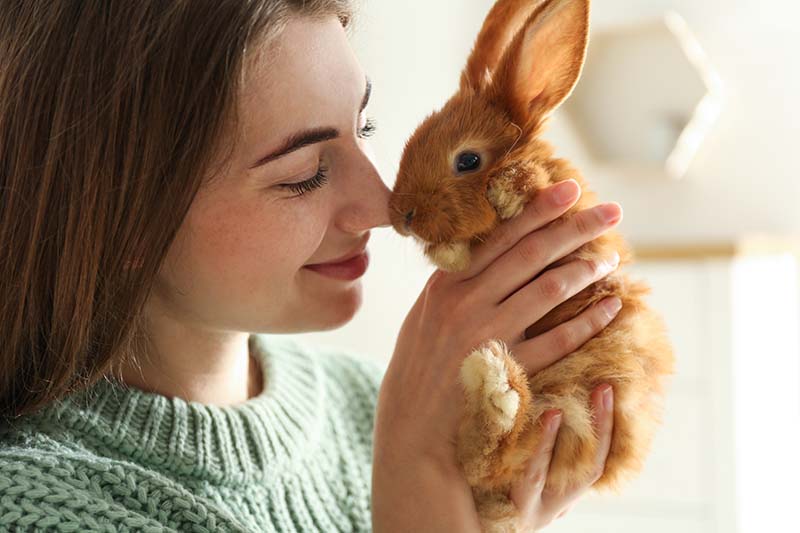
3. Between 2020-2021, 1.8% of animals coming into pet rescues were rabbits.
(PetRescue)
Rabbits are occasionally relinquished to animal rescues. Releasing them to the wild is an especially sensitive subject because Australia has a large feral rabbit population that causes significant damage to the environment.
The most common types of pets that arrive at animal rescues are cats and dogs, with about 64% of animals in rescues being cats and 30% being dogs.
4. The average amount of time it takes rabbits to be rehomed is 19 days.
(PetRescue)
Fortunately, rabbits don’t often stay in animal rescues for long. Most get rehomed within 19 days. However, it’s interesting to note that guinea pigs often get rehomed within 14 days. Dogs take about 16 days to find a new home, and cats take about 12 days.
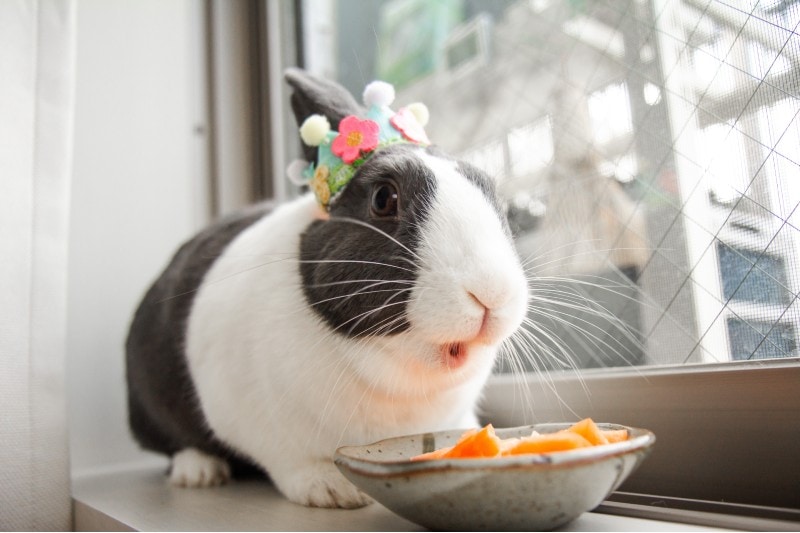
Costs of Caring for a Rabbit
5. It costs between $20-$80 to buy a rabbit in Australia.
(Coops & Cages)
Rabbits can be bought at pet shops or directly from breeders. The most significant factor that affects prices is the rabbit breed. Harlequin Rabbits, Continental Giant Rabbits, and English Angora Rabbits tend to be some of the most expensive breeds.
6. Australian rabbit owners can expect to pay between $30-$50 a month for their pet rabbits.
(Petcover)
After paying for initial costs, you can expect to pay about $30-$50 a month per rabbit. These costs go into food, treats, bedding, and toys. It’s not required to conduct routine visits to the veterinarian but finding a veterinarian with experience treating rabbits can help your rabbit live a long and healthy life. Average costs for routine visits can cost between $50-$100.
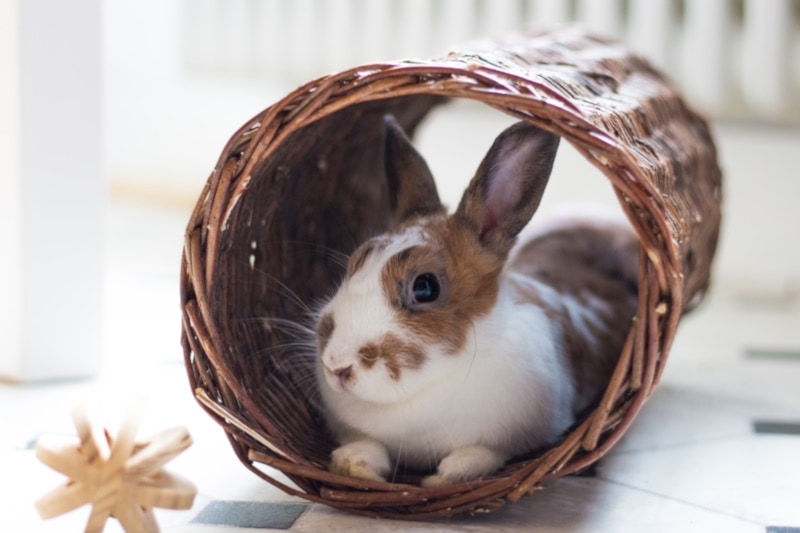
7. It’s highly recommended for pet rabbits to be desexed, and owners can expect to pay between $100-$300 for the procedure.
Since rabbits are an invasive species, it’s highly recommended that pet rabbits be desexed. It’s important to note that male rabbits aren’t sterile right after surgery. So, they need to be kept away from any unspayed adult female rabbits to prevent them from becoming pregnant.
 Rabbits as Invasive Pests in Australia
Rabbits as Invasive Pests in Australia
8. Rabbits can cause about $1 billion in environmental damage annually.
(Queensland Government)
Rabbits aren’t native to Australia. They arrived with European settlers, and they quickly bred and grew to an overwhelming population. Rabbits cause damage by foraging and competing for grazing land with farm animals, like cattle and sheep. They can also destroy crops and ruin residential gardens and lawns.
Rabbits have also made their way to islands where they don’t have any predators to hunt them and naturally maintain their population sizes.

9. There are approximately 200 million feral rabbits in Australia.
(National Geographic)
The feral rabbit population grew quickly because rabbits can breed quickly, and they don’t have natural predators on the continent. Farmers and state governments have had various tactics for controlling the rabbit population. They may destroy rabbit warrens, which are the underground tunnel networks that rabbits use to hide and raise their young.
The Australian government started using rabbit-specific viruses in the 1950s in an effort to eradicate feral rabbits. However, the rabbits eventually grew immune to these viruses, causing researchers to study other strains of viruses that may prove to be more effective.
10. A study published in 2022 revealed that a single introduction of rabbits to Australia started a mass biological invasion.
(PNAS)
The genomic and historic data discovered in this study proved that the rabbit invasion started with about 25 rabbits that were shipped to Australia in 1859. These rabbits originated in England, and it only took a few decades for the rabbits to become significant pests throughout the country.
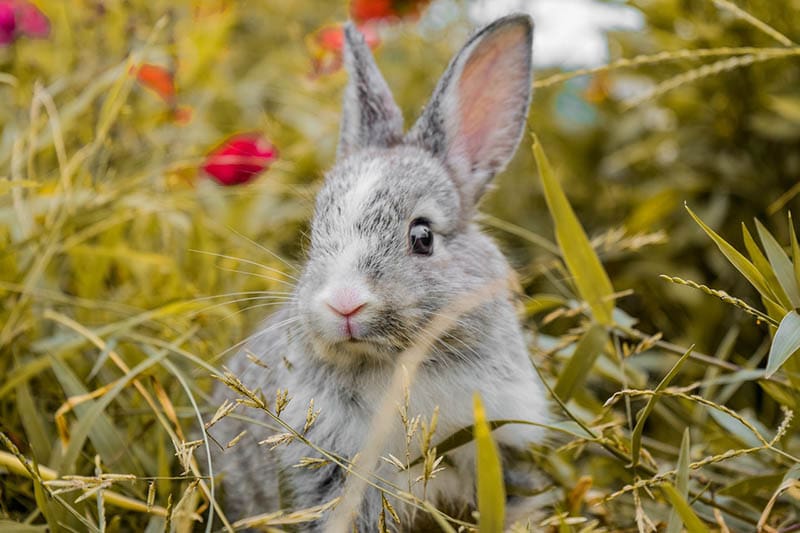
11. The current fine for keeping pet rabbits in Queensland is $65,275.
(City of Logan)
Pet rabbits are allowed in every state except Queensland. Queensland has the strictest rules against the ownership of rabbits. Initially, individuals caught owning rabbits in Queensland could face fines of about $20,000. However, this amount has increased over the years. Each local government in Queensland has varying maximum fines, but they’re all still extremely expensive.
 Frequently Asked Questions About Pet Rabbits in Australia
Frequently Asked Questions About Pet Rabbits in Australia
What are the biggest expenses of owning a rabbit?
Compared to cats and dogs, caring for rabbits tends to be much more affordable. The most significant expenses of owning a rabbit are buying a high-quality hutch and spaying or neutering surgery. You can spend a couple of hundred dollars on each of these items.
The only other significant expense would be consistently purchasing high-quality rabbit food and hay.
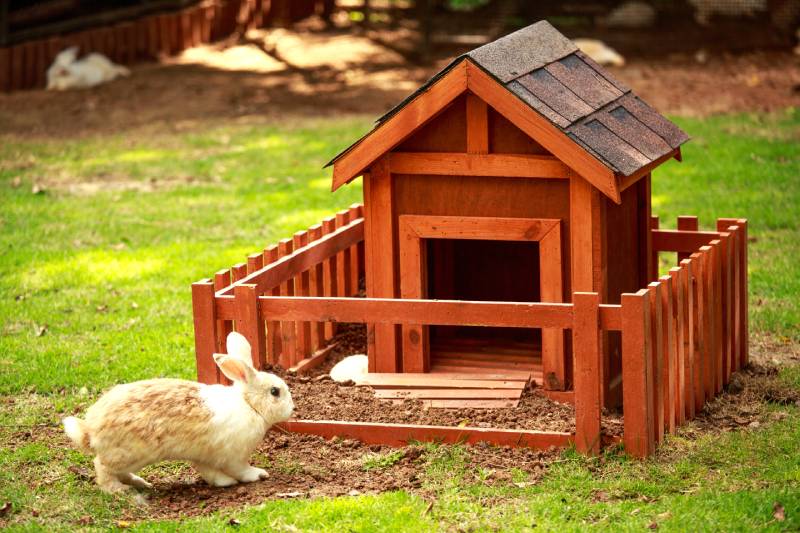
What are the most popular pet rabbits in Australia?
The feral European Rabbit is the most abundant type of rabbit in Australia, and these rabbits are the ones that are considered a highly invasive species. When it comes to pet rabbits, some of the most popular breeds include Dwarf Lops, Mini Lops, and Netherland Dwarfs.
Can travelers bring their pet rabbits with them to Australia?
Australia has relatively strict laws against importing and allowing travelers to bring pets into the country. Currently, only travelers from New Zealand are allowed to bring their pet rabbits with them into Australia. Travelers from all other countries are restricted from bringing pet rabbits, as rabbits are already an invasive species in Australia.
Do rabbits need to be vaccinated in Australia?
Pet rabbits aren’t required to be vaccinated, but most veterinarians recommend vaccination for rabbits. One of the ways the Australian government manages the feral rabbit population is by introducing viruses. The viruses used are calicivirus, or Rabbit Haemorrhagic Disease Virus (RHDV), and myxomatosis.
Rabbits that live in outdoor hutches are especially vulnerable to catching these viruses, and vaccinations against certain strains of calicivirus are available.
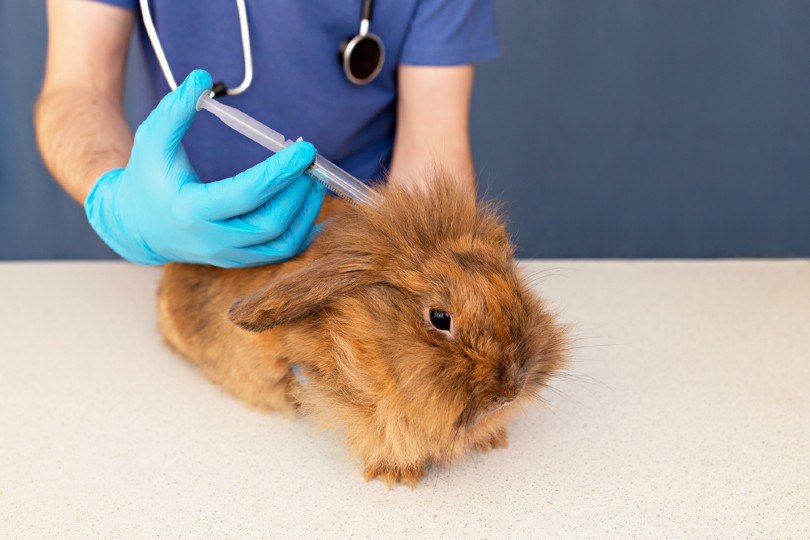
What animals prey on pet rabbits in Australia?
When rabbits were first released into the wild in Australia, they didn’t have any natural predators that hunted them down effectively. However, they are now prey to several different carnivorous animals in the wild. Common animals that hunt rabbits include dingoes, feral cats, goannas, red foxes, and eagles.
While these animals may hunt rabbits, they aren’t the most effective or efficient in maintaining the feral rabbit population. So, local governments have resorted to other means of controlling the population.
 Conclusion
Conclusion
Rabbits are adorable pets and caring for them is much more affordable than caring for cats or dogs. Most states allow rabbits as pets, and it’s important to take extra special care of them. Being mindful owners of rabbits can prevent perpetuating or contributing to the feral rabbit population issue affecting the entire country. Responsible ownership can help people continue to keep pet rabbits and enjoy the companionship and relaxation that they provide.
Featured Image Credit: Mike B, Pexels
 Top 11 Australian Pet Rabbit Statistics
Top 11 Australian Pet Rabbit Statistics Rabbits as Invasive Pests in Australia
Rabbits as Invasive Pests in Australia
